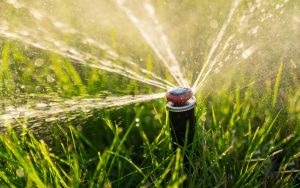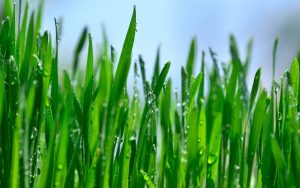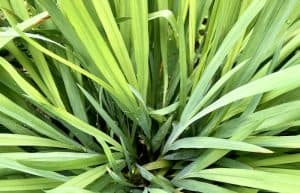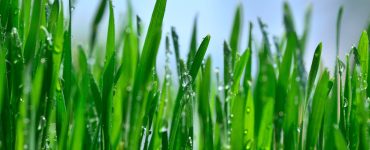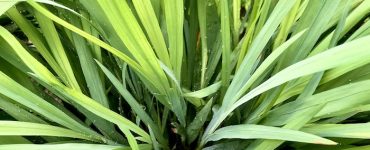Having a beautiful and vibrant lawn is a goal shared by many homeowners. A lush, green expanse not only enhances the overall aesthetics of your property but also provides a welcoming outdoor space for relaxation and recreation. When it comes to selecting the ideal grass type for your lawn, the choices can be overwhelming.
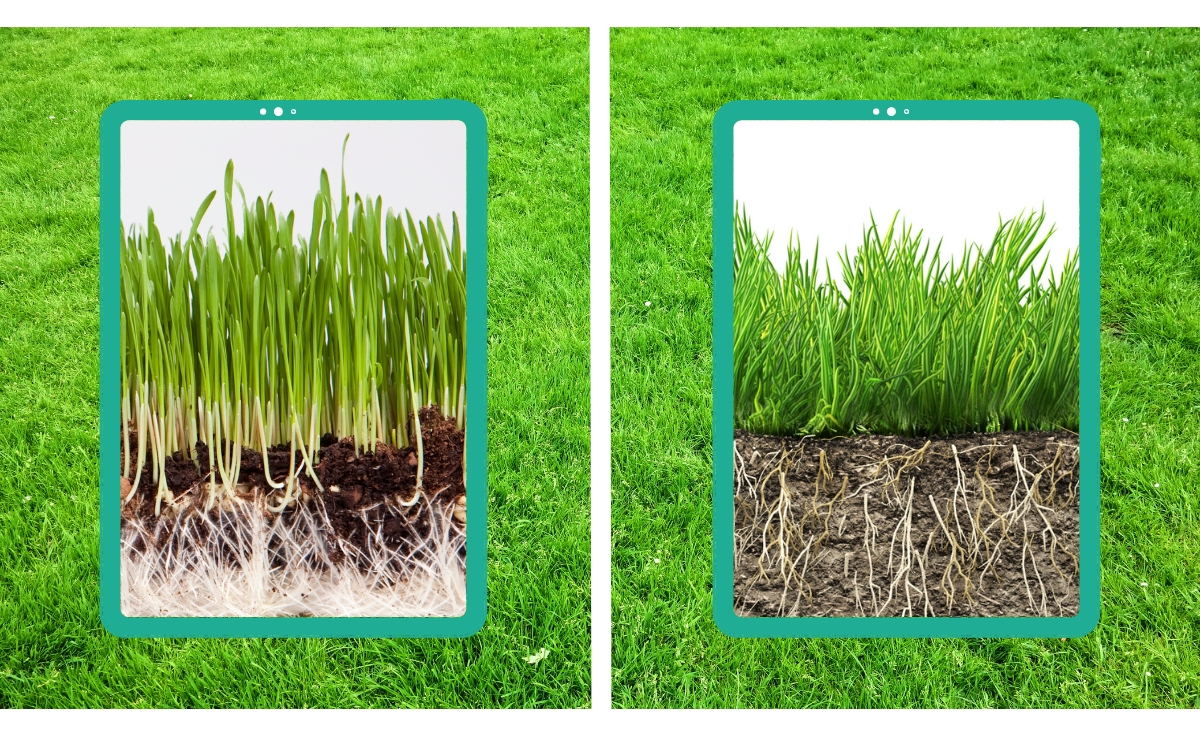
Traditionally, lawns have been covered with various species of turfgrass, but in recent times, wheatgrass has been gaining popularity as an alternative option. In this comprehensive blog post, we will delve into the key differences between wheatgrass and traditional grass, examining their respective benefits, maintenance requirements, environmental impact, and more.
Understanding Wheatgrass and Traditional Grass
Wheatgrass and traditional grass are two distinct types of vegetation that are commonly used to create lush and inviting lawns. Each has its unique characteristics and benefits, and understanding these differences is crucial in making an informed decision about which grass type is better suited for your lawn.
Characteristics and Benefits of Wheatgrass
Wheatgrass, scientifically known as Agropyron cristatum, is a cool-season grass that has been gaining popularity as a lawn option in recent years. Its rapid growth and ability to establish quickly make it an attractive choice for homeowners seeking a fast and efficient way to achieve a green lawn.
One of the notable advantages of wheatgrass is its exceptional drought resistance, which allows it to survive with minimal water requirements. This not only conserves water but also makes it a practical option for regions prone to dry spells or water restrictions.
Another significant benefit of wheatgrass is its rich nutrient content. This grass type is packed with essential vitamins, minerals, and amino acids, making it a nutritional powerhouse. Additionally, wheatgrass is known for its environmentally friendly qualities.
It requires fewer chemical inputs such as pesticides and fertilizers, promoting a more sustainable lawn care approach. Furthermore, its low maintenance nature means less frequent mowing, saving time and effort.

Characteristics and Benefits of Traditional Grass
Traditional grass, also known as turfgrass, comprises various species such as Kentucky bluegrass, Bermuda grass, and fescue grass, among others. These grasses have long been the go-to option for lawns and for good reason.
One of the key advantages of traditional grass is its well-established root system, which contributes to its durability and ability to withstand heavy foot traffic. This resilience makes it a preferred choice for lawns where recreational activities and gatherings are common.
Another benefit of traditional grass lies in its adaptability to different climates and soil types. Various species are tailored to specific regions, ensuring that homeowners can find a suitable option regardless of their location. Moreover, traditional grass lawns boast an aesthetically pleasing appearance that blends seamlessly with most landscapes, providing a classic and timeless charm.
Comparing Wheatgrass and Traditional Grass
When considering whether wheatgrass or traditional grass is the better choice for your lawn, it’s essential to compare and contrast their key characteristics.
Lawn Appearance and Visual Appeal
Wheatgrass lawns exhibit a unique appearance that sets them apart from traditional grass lawns. With its slender and upright growth habit, wheatgrass imparts a modern and sleek look to the landscape.
On the other hand, traditional grass lawns offer a more conventional, lush, and textured appearance. Deciding which grass type complements your property’s aesthetics better depends on your personal taste and the overall design of your outdoor space.
Maintenance Requirements
Maintaining a healthy lawn requires careful attention to watering, mowing, and fertilizing. Wheatgrass typically has a lower mowing frequency due to its slower growth rate, which can be advantageous for those seeking to reduce mowing efforts.
Its drought resistance and lower water demands also make it an attractive option for water-conscious individuals. Conversely, traditional grass lawns may require more frequent mowing and irrigation to maintain their optimal appearance, especially during peak growing seasons.
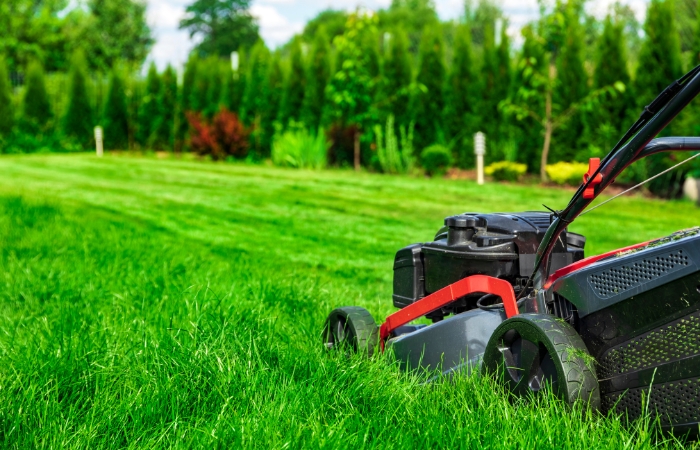
Fertilization is a crucial aspect of lawn care, and both wheatgrass and traditional grass have specific nutrient requirements. Understanding these needs is vital in ensuring the grass thrives and remains resilient against stress and diseases.
Environmental Impact
When considering the environmental impact of your lawn, both wheatgrass and traditional grass offer distinct advantages. Wheatgrass’s ability to thrive with fewer chemical inputs, such as fertilizers and pesticides, contributes to a reduced environmental footprint. Additionally, its water-saving qualities aid in water conservation, particularly in regions with water scarcity concerns.
On the other hand, traditional grass lawns can also contribute positively to the environment. Certain species of traditional grasses, such as clover, can fix nitrogen in the soil, promoting soil health and reducing the need for synthetic fertilizers. Additionally, traditional grass lawns can provide habitat and food sources for various wildlife, contributing to local biodiversity.
Choosing the Right Grass for Your Lawn
Selecting the perfect grass type for your lawn is a critical decision that will significantly impact its overall health and appearance. Several factors come into play when making this choice, including your climate, soil type, water availability, and desired level of maintenance. Here, we will explore the key considerations to help you make an informed decision and create a lush and thriving lawn that suits your specific needs.
Climate and Weather Considerations
The climate of your region plays a crucial role in determining the best grass type for your lawn. Different grass species have specific temperature and moisture requirements, and choosing the right one can significantly affect its growth and resilience.
For warm climates, warm-season grasses such as Bermuda grass, St. Augustine grass, and Zoysia grass are excellent choices. These grasses thrive in hot and sunny conditions and tend to go dormant during colder months. They are drought-tolerant and can withstand dry spells, making them suitable for areas with limited water availability.
Conversely, for cool climates, cool-season grasses like Kentucky bluegrass, perennial ryegrass, and tall fescue are better suited. These grasses flourish in milder temperatures and can withstand cold winters. They may require more frequent watering during warmer months but are generally well-adapted to regions with varying weather conditions.
Soil Type and Quality
Understanding your soil type and quality is crucial in selecting the right grass type that will flourish in your lawn. Different grass species have specific soil preferences, and some may struggle to grow in certain soil conditions.

For instance, sandy soils tend to drain quickly, making them more suitable for drought-tolerant grasses like Bermuda grass. On the other hand, clay soils retain moisture and may require grass types with better drainage capabilities, such as tall fescue.
Conducting a soil test can provide valuable insights into your soil’s pH levels, nutrient content, and drainage capacity. Based on the results, you can choose a grass type that is well-suited to your soil conditions or make appropriate amendments to improve its quality.
Water Availability and Conservation
The availability of water is a crucial factor to consider when choosing the right grass for your lawn, especially in regions where water scarcity is a concern.
If water conservation is a priority, opt for drought-tolerant grasses like Bermuda grass or Buffalo grass. These grass types have deep root systems that allow them to access water deeper in the soil, making them more resilient during dry periods.
For areas with ample water resources, cool-season grasses like Kentucky bluegrass and perennial ryegrass can provide a lush and vibrant lawn. However, regular watering will be necessary to maintain their optimal appearance.
Installation and Establishment
The method of installing and establishing your chosen grass type can influence its success in taking root and thriving in your lawn.
For grass seed options, proper seeding techniques are essential. Prepare the soil by removing debris and weeds, and then spread the seeds evenly across the area. Water the lawn consistently during the germination period to encourage healthy growth.
Alternatively, sodding can be a quicker way to establish your lawn. Sod provides an instant green cover and is ideal for regions with harsh weather conditions or limited time for seed germination.
Long-Term Benefits of Your Chosen Grass Type
Beyond the immediate considerations, it’s essential to think about the long-term benefits of your chosen grass type for your lawn.
Environmental impact and sustainability should be taken into account. Opting for grass types with water-saving qualities and low chemical inputs can contribute to a more eco-friendly lawn.
Additionally, consider the cost-effectiveness of your choice. While certain grass types may have higher initial installation costs, they might lead to long-term savings in maintenance and water usage.
Conclusion
Choosing the right grass type for your lawn is a decision that will significantly impact the beauty and health of your outdoor space for years to come. Throughout this blog post, we have explored the characteristics, benefits, and maintenance considerations of both wheatgrass and traditional grass. Each option offers unique advantages, and the optimal choice will largely depend on your climate, soil type, water availability, and desired level of maintenance.
If you prioritize quick establishment, water efficiency, and eco-friendliness, wheatgrass could be the perfect fit for your lawn. On the other hand, if you prefer a classic, well-established lawn that can withstand heavy foot traffic and diverse climates, traditional grass might be the better option.


